Why retailers need to adopt omnichannel personalisation
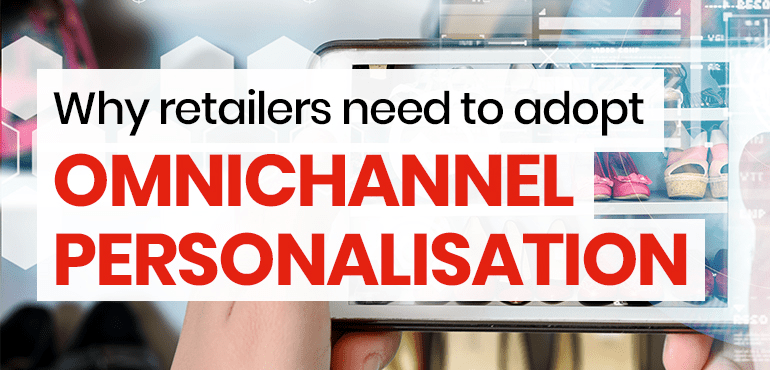
- The rise of omnichannel
- Digital vs. physical personalisation
- Barriers to omnichannel personalisation
- Successful omnichannel personalisation strategy
- Benefits of omnichannel personalisation
- Final thought
Every online retailer understands and implements customer personalisation to some degree. Personalised digital shopping experiences are standard practice for many eCommerce businesses and the result they yield speak for themselves: lift in customer engagement, increased conversion rates, higher average order value (AOV) and stronger brand loyalty. But how can this level of personalisation be applied in the physical world?
The rise of omnichannel
With the rise of omnichannel shopping customers are beginning to expect retailers’ webstores and brick-and-mortar stores to be joined up. In other words, they are expecting no line or demarcation between the digital and physical elements of a retail business. And although some retailers are offering omnichannel shopping experiences, there is still disparity between levels of online and offline personalisation.
Retailers who are able to personalise shopping experiences across digital and physical stores can achieve a 5% to 15% revenue increase across their customer base. While the focus with customer personalisation has been more on online shopping journeys, more than 80% of sales still happen in brick-and-mortar stores, so it makes sense to offer personalised shopping experiences offline as well as online.
Digital vs. physical personalisation
Personalisation is common in online shopping journeys but is rarer in brick-and-mortar stores. For example:
An online shopping experience can typically include, outside of a webstore, targeted ads, targeted marketing messages such as emails and notifications, and personalised social media content. While visiting a webstore, customers can expect a personalised journey that includes product recommendations based on browsing and purchase history and product affinity.
Once customers have left the webstore, they still receive personalised interaction with the retailer in the form of marketing emails and notifications, personalised offers, cart recovery emails, relevant new product information etc.
On the other hand, the brick-and-mortar shopping experience is very different when it comes to personalisation. The customer journey is mostly generic, with generic ads or window displays outside of the store, generic in-store experience with practically zero personal acknowledgment from staff members, no personal browsing data is collected to make recommendations, if no purchase is made then no data at all is collected, with sometimes a small amount of customer information collected at POS.
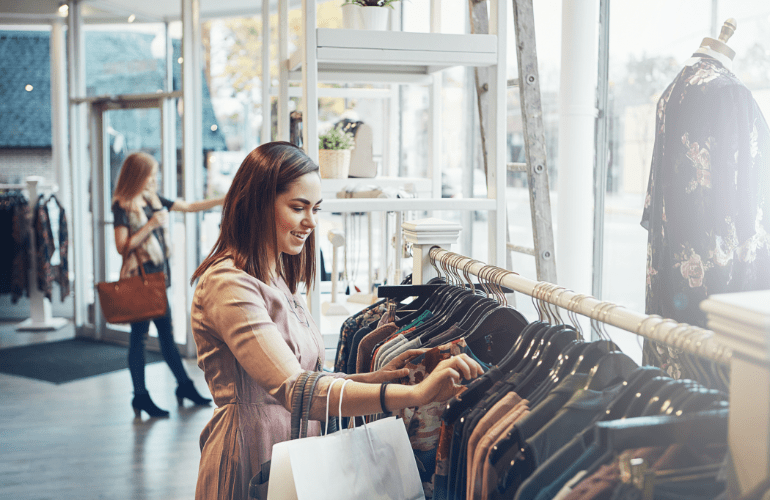
Barriers to omnichannel personalisation
Many retail businesses understand omnichannel personalisation and its value. There are however a number of factors that can prevent them from implementing it, such as:
Retailers believing that they will need to make a significant investment in technology with a distant ROI
In-store personalisation requires digital touchpoints in a showroom or on a shop floor, such as customer facing digital screens, kiosks, tablets, enabling consumers to use their own devices via an app for augmented reality (AR) and chatbot personal shoppers, in order to experience in-store personalisation.
Also, retailers might still be working on their omnichannel backend, linking in-store and webstore inventory, creating a single source of truth—retailers must be omnichannel before they can offer customers personalised omnichannel experiences. That can seem like a lot of work and investment, in cost, time and resources.
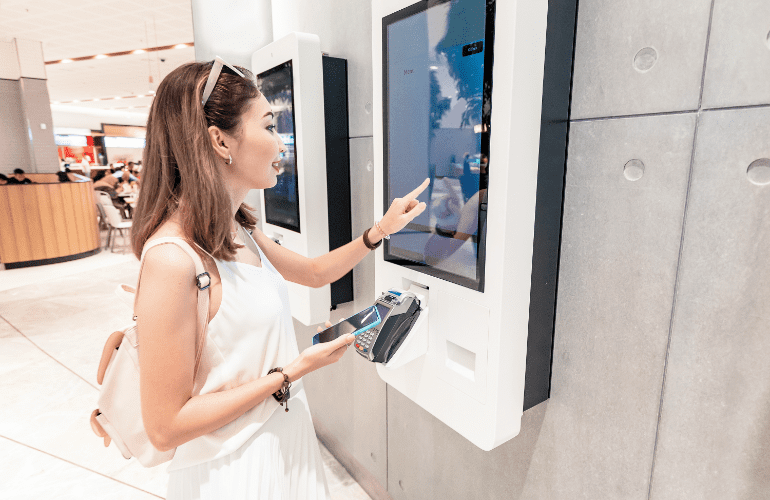
Difficulty in delivering omnichannel customer experiences
In-store personalisation changes the customer journey flow. Getting this wrong can negatively impact in-store shopping experiences. Customer expectations will be high as the line between webstores and brick-and-mortar stores vanishes.
Downloading and engaging with the store shopping app, using AR and virtual personal shoppers, signing in at a kiosk, getting personalised customer information to frontline staff members in real time, and training those staff members to deliver in-person personalised shopping will be a challenge.
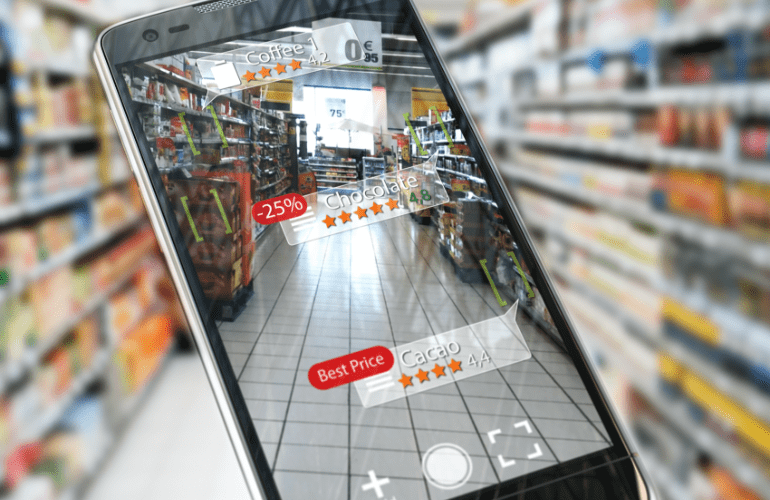
Shifting organisational structure and business culture
Omnichannel personalisation poses a challenge for retailers around the structure and culture of their businesses’ digital and physical elements. Many retailers still divide their online and physical stores, each one with its own strategy and ownership of outcomes, with little (if any) reason for one part to support or collaborate with the other.
The shift to omnichannel personalisation can only be successful when all parts of a business are unified, with measurement and incentives implemented holistically—webstore and brick-and-mortar. The reality is that retailers don’t have to implement a fully loaded omnichannel personalised experience from the get-go. In-store personalisation can be rolled out over time, not only for the retailer to successfully deliver it, but also for customers to get used to it.
Successful omnichannel personalisation strategy
Defining omnichannel personalisation
To successfully implement omnichannel personalisation, retailers must have a clear view of their customers’ journeys, from generating awareness before engagement, to increased engagement post store visit:
Awareness pre store visit
Retailer apps are an example of how to drive footfall to physical stores via digital means. Imagine a retailer crates geo-fenced push notifications when customers are within a certain distance of a store, with each notification tailored to specific segments with personalised in-store special offers. This would help drive customers to the store. One such geo-fence campaign by US supermarket, Whole Foods, saw 5% of customers who engaged with the notification visit the store. That’s three times more than the sector post-click conversion average.
Geo-fencing is not yet widely used in retail, but as omnichannel personalisation becomes more prevalent this type of personalised engagement will become more popular.
In-store conversion
Personalised recommendations and targeted offers can be made in-store based on a number of factors, such as previous purchase history, or time of day, weather conditions, trending products etc., depending on business sector. For example, a fast food restaurant might adjust its digital screens for time of day and weather conditions: breakfast or lunch, hot or cold outdoor temperature. An arts and crafts retailer might spot that a customer hasn’t bought a particular consumable in a while, enabling a staff member to make a recommendation based on likely need.
In-store omnichannel personalisation is in this respect similar to online shopping, where conversion rate is optimised by offerings that are more relevant and more valuable to customers either while browsing or at POS.
Post store visit engagement
Just like a webstore, continuing to engage with customers after they have visited a brick-and-mortar store is an effective way to maintain brand awareness and to entice them back. Based on webstore activity, using in-app notifications, personalised emails and social media to communicate and interact with customers, especially about in-store events and special shopping experiences, such as product demonstrations, in-person expert insights or new product launches, will help draw customers in-store.
Remember, personalised omnichannel in-store shopping is as much about offering unique experiences to build brand awareness as it is about selling product. Live and special events can be shared on social media to create conversation and engagement collateral after the fact.
To achieve omnichannel personalisation retailers need to connect the digital and physical elements of their business. The five touchpoints to focus on: mobile device (app), digital displays, interactive screens, store assistants and point of sale:

Benefits of omnichannel personalisation
As shopping journeys become more complex and challenging to track, it’s becoming increasingly difficult for retailers to predict customer behaviour. Customers begin their journeys with product research, and them make comparisons, then look at cost and value for money, then they might look for a demo and reviews of specific products, only then will they be ready to purchase. And then post purchase they will leave UGC in the form of reviews and social media content.
Every point in the customer journey could be on a different website, using offline collateral or with a different brick-and-mortar store. The zigzag path of customer journeys does not see a line between the digital and physical worlds.
From a customer point of view, omnichannel shopping experiences reduce friction between webstore and brick-and-mortar store, giving customers improved continuity and a stronger sense of retailer brand. For truly unified omnichannel shopping experiences the missing piece is being able to offer the same level of personalisation at every customer touchpoint regardless of where it occurs.
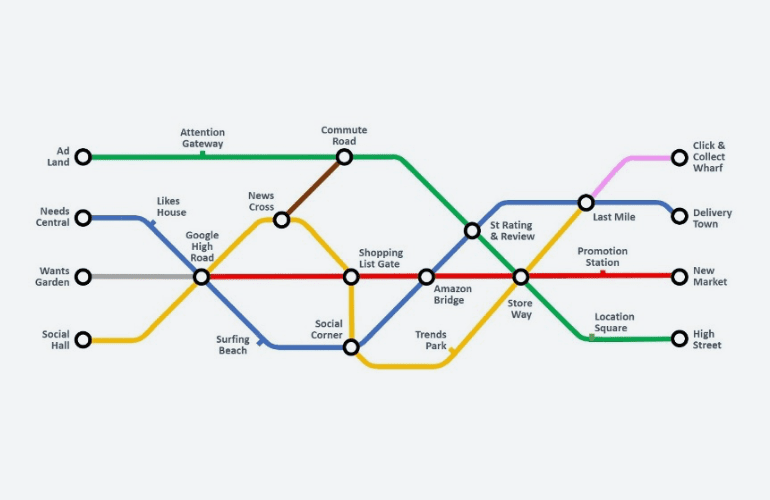
Each of the three key shopping journey stages is an opportunity to personalise customer experiences, giving retailers who can successfully implement an omnichannel personalisation strategy the ability to offer customers more valuable offers and promotions, have one-to-one in-store relationships with informed sales staff, have higher conversion rates, higher AOV, be able to achieve higher CLV, creating a competitive advantage.
Final thought
Offering customers the choice of whether to buy online or have in-store shopping experiences under a single retail brand, with the line between digital and physical removed, and personalising omnichannel touchpoints and experiences will help create omnichannel loyalty. But ultimately the benefits of omnichannel personalisation are the same as online personalisation. The real difference is made when the two work as one, to give each customer a single, unified shopping journey.
Does your retail business sell both online and offline? Are your digital and physical stores joined up? If you would like to know more about omnichannel personalisation then get in touch today for a chat with one of our eCommerce experts.


 Back
Back